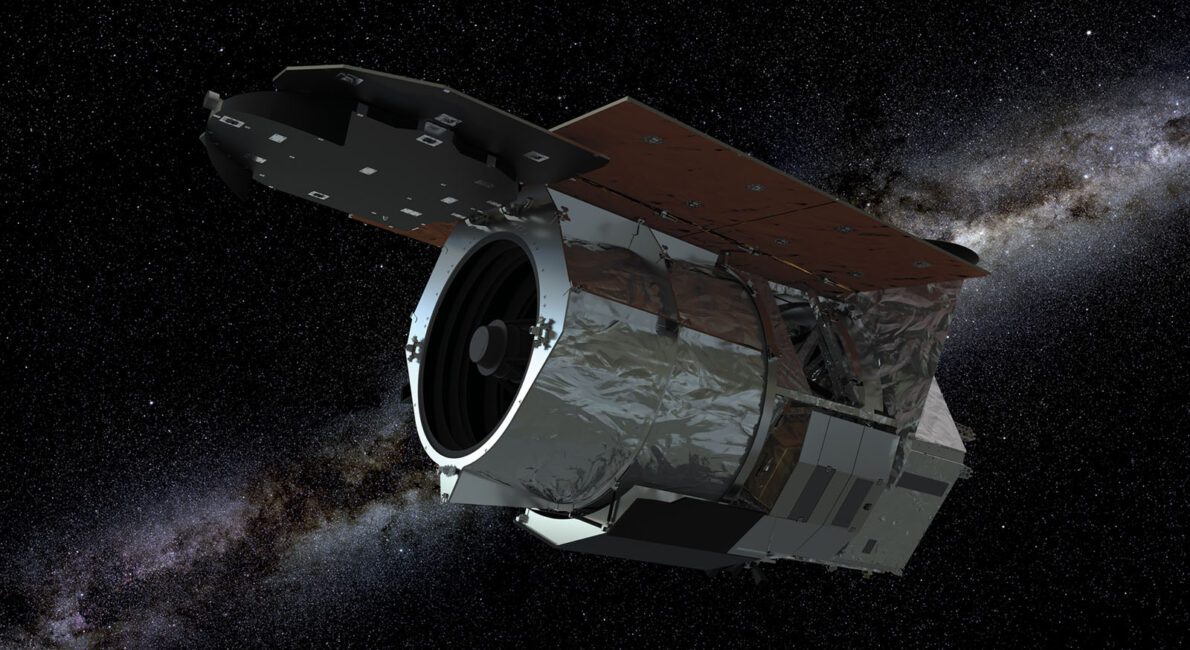Photo: NASA-GSFC
Onboard the Nancy Grace Roman Space Telescope is the Wide Field Instrument – a camera with a grism and a prism – which splits light into colors to reveal the chemical and physical properties of celestial objects.
Scientists picked our SuperK supercontinuum lasers and filters to characterize the grism and prism because of its broad wavelength range, the fiber-delivery option, and the high brightness diffraction-limited light.
The superpowers of a SuperK
A broad range of wavelengths
The scientists used a SuperK FIANIUM FIR-20 supercontinuum white light laser with the SELECT monochromator.
They picked this solution for the calibration due to its broad wavelength range of 640 to >2000 nm.
The SELECT could simultaneously output up to eight wavelength lines, each with an average FWHM of around 10 nm, suitable for diffraction efficiency, throughput, and relative radiometric measurements but too wide for encircled energy and spectral resolving power measurements.
Broadband fiber delivery
The SuperK CONNECT couples the SELECT output into endlessly single-mode photonic crystal fibers (LMA-5 and LMA-8) to provide a diffraction-limited point source for the testbed. These fibers deliver light to an elliptical mirror setup that simulates the Roman telescope’s beam.
The setup allows for calibration and characterization of the grism and prism, covering wavelength ranges of 1000-1930 nm and 750-1800 nm, respectively.
High brightness diffraction-limited light
The testbed demonstrated diffraction-limited performance, with alignment and position adjustments simulating different field angles.
This advanced laser produces a broad spectrum of light, making it ideal for testing the grism and prism across a wide range of wavelengths. Its high brightness and stability ensure precise measurements, contributing to the overall accuracy and reliability of the telescope’s instruments.
Detailed panoramic views of the universe
The WFI is a camera that will take images and spectra of the sky in visible and near-infrared wavelengths. It will use a technique called Weak Gravitational Lensing to measure how the gravity of massive structures like clusters of galaxies bends the light from distant sources. This will reveal the distribution and properties of dark matter and dark energy, which affect the expansion and shape of the universe.
The WFI will also study the history and structure of galaxies, tracing their formation and evolution over time. By observing millions of galaxies at various distances, the WFI will create a three-dimensional map of the cosmos and examine how galaxies change with their environment. It can also detect planets that are too faint or too far away to be seen by other techniques.
Get the details in the white papers
Spectral characterization of the Grism and Prism slitless spectrometers for the Nancy Grace Roman Space Telescope by Evan Bray, Mateo Batkis, Victor J. Chambers, Margaret Dominguez, Bente Eegholm, Guangjun Gao, Qian Gong, Wesley Halliday, Elias Howe, Jeffrey Kruk, Eliot Malumuth, Sangeeta Malhotra, Catherine Marx, James Rhoads, Maxime Rizzo, Joshua E. Schlieder, Laurie Seide, Eric R. Switzer, and Jay Voris published in Journal of Astronomical Telescopes, Instruments, and Systems, Vol. 10, Issue 1, February 2024.
Spectral characterization of the Grism and Prism slitless spectrometers for the Nancy Grace Roman Space Telescope by Qian Gong, Matthew Bergkoetter, Joshua Berrier, Victor J. Chambers, Margaret Dominguez, Wesley Fincher, John Hagopian, Catherine Marx, and Laurie Seided published in Journal of Astronomical Telescopes, Instruments, and Systems, February 2024.
Want to know more?
Check out NASA’s website to learn more.
NASA’s Roman Mission Completes Key Optical Components.
Who was Nancy Grace Roman?
Nancy Grace Roman was a pioneering American astronomer who played a crucial role in developing the Hubble Space Telescope. Born in 1925, she earned a Ph.D. in astronomy from the University of Chicago and became one of NASA’s first female executives.
She was deeply involved in establishing NASA’s astronomy program and advocating for space-based telescopes, leading to the success of Hubble. To honor her contributions, NASA named the Nancy Grace Roman Space Telescope after her. This mission will launch in 2027 and aims to explore dark energy, dark matter, and exoplanets, providing a wide-field view of the universe with unprecedented detail.
The Nancy Grace Roman Space Telescope will have a 2.4-meter primary mirror, similar in size to the Hubble Space Telescope, but with a much wider field of view. The telescope will also carry scientific instruments – one of them is the Wide Field Instrument (WFI).







